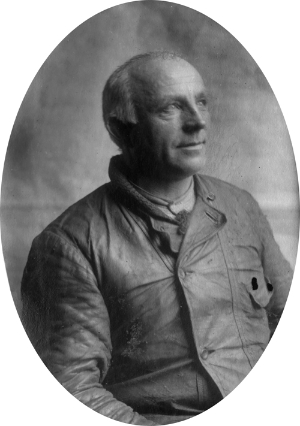Did you know that Oscar Wisting was the 'seamstress' of Amundsens's South Pole expedition?
Oscar Adolf Wisting (1871–1936) was head-hunted for the expedition to the South Pole after having test-flown kites designed to lift a man.
 Oscar Wisting. Photo: Norwegian Polar Institute
Oscar Wisting. Photo: Norwegian Polar Institute
Amundsen was impressed by the brave artilleryman from Larvik. But Wisting himself was glad to be on the ground again. He had taken the place of Captain Ole Engelstad, who had perished when one of the kites was struck by lightning. On the expedition to the South Pole, the kites were never used.
Wisting soon proved himself to be very good with his hands. Without any previous experience, he took on the task of sewing the expedition’s clothing, tents, and other gear. Each man was responsible for his own clothing, but Wisting sewed undergarments, socks, windbreakers and the like for everyone on the team. Amundsen later remarked that Wisting’s specially made flannel underwear was the best he had ever used.
On board Fram after the triumph at the South Pole, everyone was in a festive mood, but Wisting sat in his cabin reading the mail from home. Three of his seven children had succumbed to disease while he was away on the expedition – his daughter and two twin sons he never met. The sharp contrast between triumph and tragedy naturally took its toll on Wisting at the time.
He later served as first mate (1918-21) and first officer (1922-25) on Maud and participated in Amundsen’s 1926 flight over the North Pole with the airship Norge. On Maud, extensive observations were made under oceanographer/meteorologist H.U. Sverdrup, who later became the first director of the Norwegian Polar Institute. The scientific work done from Maud was of great importance for understanding the Arctic. When Amundsen and his aircraft Latham disappeared in 1928, Wisting participated actively in the search for his old “Chief”.
In the last years of his life, Wisting worked hard for the preservation of the polar vessel Fram, and lived to see it restored. Wisting made a habit of spending nights on board in his old cabin whenever he worked with the restoration. He died of heart failure on the night between 3 and 4 December 1936, just a few days before the 25th anniversary of the conquest of the South Pole. The speech he had prepared for the commemoration was read by Captain Hjalmar Riiser-Larsen.